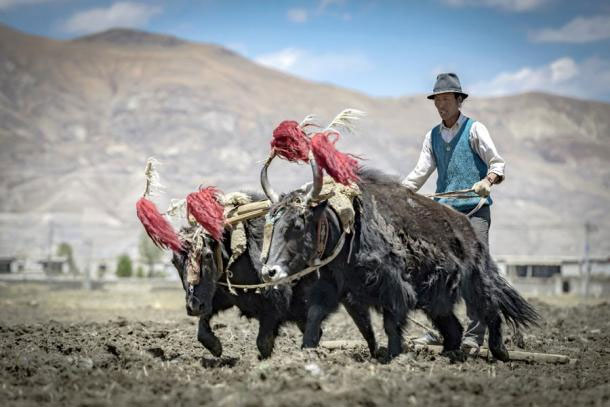The project was conducted by a team of scientists from the University of California, Davis (UC Davis), and was recently published in the scientific journal Trends in Ecology and Evolution.
The research indicates that the Denisovans arrived in the Tibetan Plateau approximately 160,000 years ago, with evidence of two periods during which Denisovan communities interacted and interbred with Homo sapiens (modern humans).

The Tibetan people thrive in harsh, low-oxygen environments thanks to inherited “superpowers” from an extinct human species – (Photo: Adobe Stock)
These ancestral species passed on special genes to the daughters of mixed lineage. These women continued to carry this valuable genetic material, passing it down to subsequent generations of Homo sapiens in Tibet, maintaining it to this day—approximately 20,000 to 30,000 years after the extinction of their ancestral species.
These genes enable Tibetans to adapt to high altitudes, breathe efficiently, and live healthily with very low oxygen levels on the Tibetan Plateau, and they are unique genes that no other Homo sapiens communities possess. Tibet is famously a harsh plateau where most outsiders face serious health issues due to oxygen deficiency.
According to Phys.org, the primary factor contributing to this superpower is the Endothelia Pas1 (EPAS1) gene, which significantly improves oxygen circulation in the blood and is prevalent among Tibetans and modern Siberian women. An ancient version very similar to this gene was found when scientists discovered mitochondrial DNA extracted from the thumb bone of a young Denisovan girl found in the Altai Mountains, Siberia.
According to Ancient Origins, archaeological evidence indicates that the Denisovans dominated the Tibetan Plateau 160,000 years ago, while modern humans arrived in three waves at 40,000, 16,000, and 8,000 years ago. It was the first group of Homo sapiens to arrive in Tibet that inherited this “superpower.”


















































